Jigs


Jigs are a top choice for year-round action. There is no wrong season to fish them. Even in the winter jigs are effective in open, cold water and in ice fishing.
Generally a jig has no built-in action. You must impart the action to make it look alive. Jigs imitate bait fish, crawfish, and other aquatic food sources.
Jigs are lead-headed hooks in which the lead has been melted around the hook shank right behind the hooks eye. A wide variety of lead shapes are available, but the most common one is the round style. Cone style and football shapes are also available. The cone shape swims freely while the football shape, which is sideways, allows the jig to sit on the bottom upright.
Non-lead jigs are available to fish in waterfowl marshes. Their weights are usually a tin alloy or other heavy, non-toxic metal.

The body can be made of hair, marabou, or a soft plastic. I like the thin profile that a buck tail hair provides. This imitates thin-bodied bait fish. Wherever fish are feeding on such bait fish, hair body is a good choice. Smallmouth bass have a preference for hair jigs.
Marabou is a soft feather that moves with the slightest motion. I like to fish them in still, clear water where subtle motions are vital to a slow retrieve. Trout seem to prefer this marabou action. A marabou jig can be made to breathe with little motion. Squeeze the rod handle without moving the rod in any other way. This squeeze transmits the slight breathing motion down to the marabou. This can make a still jig look alive. This also works well in colder water and ice fishing.
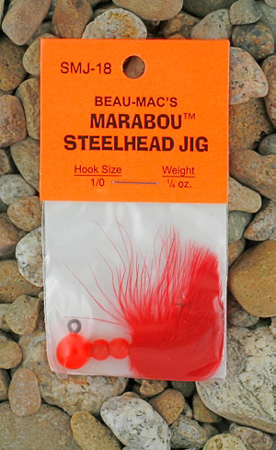
Plastic jigs are the most common. Tube heads with sliced tails are effective for all kinds of fish. Other curly tail and grub type jigs fall into this same category. The plastic is soft and once activated, it wiggles back and forth as if alive.

Plastic jigs imitate bait fish, aquatic insects, leeches, and crawfish. The thicker jigs imitate the crawfish best while the thinner jigs imitate the other food sources.
Color selection is made using the same basic rule: match the natural food in coloration. In light conditions, lighter colors are most visible. In darker conditions, the darker colors are more visible. White seems to work in all lights. Fluorescent chartreuse is effective in muddy conditions.
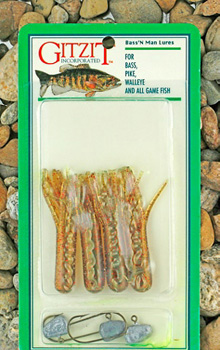
Water clarity must be clear enough for the jig to be seen. In dark, soiled water the jig may not be the best choice. You’re better off using a bait that has a silver flash or a sonic vibration and/or scent.
Nearly all the time I prefer to fish jigs slowly and deliberately. I overcast my target and allow the jig to settle onto the bottom. There I breathe the jig or move it slightly upwards by lifting the rod tip. Next I lower the tip and allow it to settle back down on the drop. I keep a straight line so I can feel or see a light strike. I repeat this process and occasionally I speed up the hop with a high and faster lift of the rod tip. Most of the strikes occur on the fall.
A fish will suck the jig into its mouth by flaring its gills. This will cause the line to flick or to suddenly move off center to one side. Immediately set the hook with a firm sweep of the rod.
My next favorite method is to fish two jigs in tandem. The dropper jig is about twenty inches from the end jig. I swim the two together in either rod sweeps upwards or sideways. If I want them to lift upwards, I move the rod tip upwards. Then I let it settle back down again. Sideways sweeps cause the jigs to lift off only slightly. A series of slow pulls and stops are used. The big advantage of two jigs is that they move in tandem just like minnows move in a school. I prefer to use the lightest jig heads possible when fishing tandem.
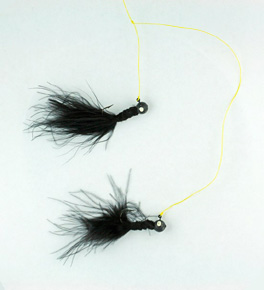
Usually two 1/32 oz or 1/16 oz jigs are preferred. This is a deadly method for fishing thin hair jigs. In fact this is my most productive walleye method.
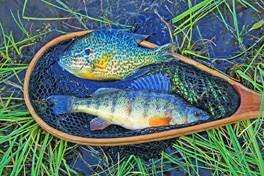
Plastic and marabou jigs are also effectively fished in tandem. The retrieve is a swimming one in which the jigs move about two or three feet and pause.
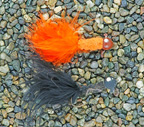
On occasion I will fish with a steady, slow retrieve and simply stop winding for the pause. The rod tip stays pointed towards the fish.
I rarely fish jigs with a fast retrieve. When I want to fish just under the surface, I will use a bobber that sets the depth. I can also use ultra light jigs and fish with a quicker retrieve.
Since you must impart all the action to a jig, it’s better to use the lightest weight jig head and the thinnest line possible. This allows for the most action on the slowest retrieves.
Tie on a jig with a knot--never a swivel or snap. A firm connection at the jig head prevents softening the action imparted to the jig by a loose snap connection.
I prefer bulky, heavier jigs to imitate crawfish. Trailers that look like crawfish arms are also good additions. The jig and pig combo of added pork rind is good for bass in water cooler than 70° F. But if the water exceeds 70° F, I do better with a plastic trailer. What the trailer does is to act and to look like a crawfish’s
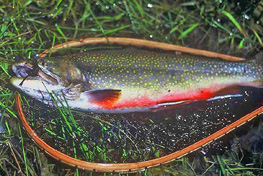

thicker pinchers and thorax. This silhouette is crawfish-like in appearance. Crawfish type jigs are cast out and allowed to settle to the bottom. Tighten the line just enough so it appears that the crawfish’s pinchers are angled upwards. Then inch the jig along the bottom in slow crawls. An occasional short, fast spurt makes the jig appear like a crawfish that is getting away.
As you can see, fishing jigs requires patience and concentration. You must constantly watch the line for takers on the fall of the jig. Fish them slowly but deliberately.
Sharp hook points are a must. You need the point to quickly catch and penetrate the fish’s mouth. Jigs actively fished and moved slowly are surprisingly snag free. The hook rides upwards and does a good job of avoiding snags. It seems that I most likely snag up when I stop or cause the retrieve to be retarded. Once snagged, don’t try to pull it out with force--instead allow some slack and jig the rod tip up and down and sideways. Many times this will cause the jig to free itself.
Steelhead love jigs. Fishing a jig about one foot over their heads with a naturally drifting bobber is one
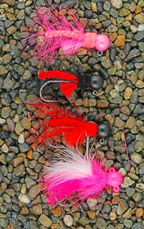
of the most effective methods to use. Adjust the bobber so the jig drifts about a foot above the bottom. This keeps it out of the boulders and allows a snag-free drift.
Make long casts and let the bobber drift along naturally just a little slower than the surface current speed. Long presentations are achieved by letting out line as the bobber drifts downstream from your position. If the bobber stops, moves sideways, or disappears, set the hook.
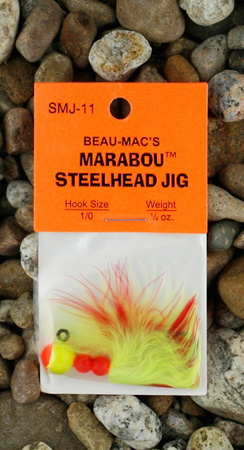
Steelhead are usually caught in runs about four
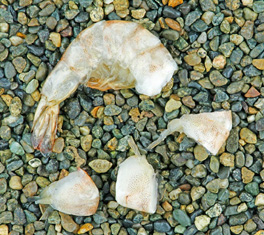
or five feet deep which are moving at the speed that you can easily walk. This calls for a 1/8 oz jig that is tied with fluorescent shades of pink, orange, and red.
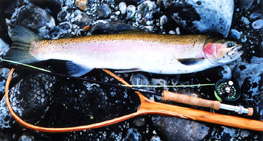
Dark colors in purple and black also work well. A contrasting white color is helpful. Tipping the jig with a small section of prawn adds the scent that steelhead
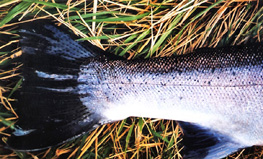
love. This bobber and jig method has really caught on. It’s popular because it’s effective for snag-infested streams.
In conclusion, jigs are one of the most productive lures all year long. They take a wide variety of game fish. Remember use the lightest bait and line that you can sink to the proper depth and land the size of fish available. Fish jigs slowly but deliberately.

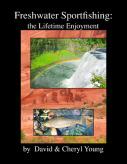
© 2026 The Gale Group, Inc. All rights reserved.
© 2026 Perigee Learning LLC. All rights reserved.
LoveTheOutdoors.com is owned and operated by Advameg, Inc. © 2026 Advameg, Inc.
Camping Adventures • Dutch Oven Cooking • Sports Knots
Fly Tying • Freshwater Fishing • Fly Fishing

